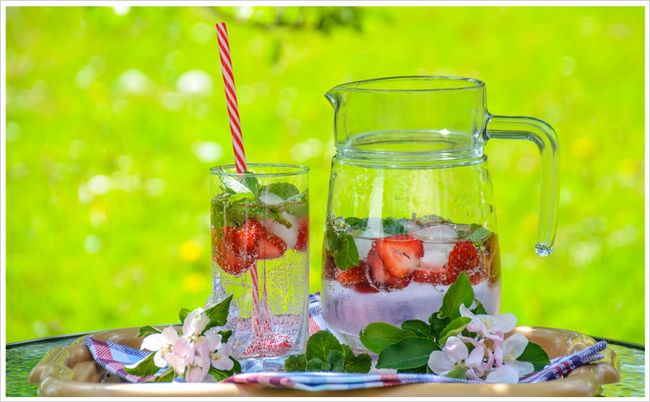Overview of Earth
Earth is where we all live. It is our home in the solar system.
There is no other place for us to live. Earth isn’t just any planet.
It’s a very special place. It’s special because we depend on it for many things.
Because of its importance, we need to take care of it.
Exercise:
1. — Why is Earth so special?
— It’s special because we depend on it for many things.
2. It’s special because we depend on it for many things.
We depend on the Earth for its air, its water and many of its natural resources.
Natural resources, such as coal and oil, give us energy.
Other natural resources we depend on include forests and soil.
Forests provide clean air and wood for building houses.
Soil is needed to grow plants and keep them healthy.
We need to take care of these resources and not waste them.
Exercise:
1.— What are examples of natural resources?
— Coal and oil are examples of natural resources.
2.— Why we need forests?
— Forests provide clean air and wood for building houses.
3. Forests provide clean air and wood for building houses.
4. Other natural resources we depend on include forests and soil.
The Earth is a large, rotating sphere, about 4.5 billion years old.
The equator which divides the Earth into two hemispheres, is about 40,000 kilometers long.
The Earth's diameter is 12,756 kilometers.
Its radius is half that, or 6,378 kilometers.
The radius is the distance from the Earth’s center to its surface.
Most of the Earth’s surface is covered by water.
The rest of the Earth’s surface is land.
Exercise:
1.— What divides the Earth into two hemispheres?
— The equator divides the Earth into two hemispheres.
2.— What covers most of the Earth’s surface?
— Most of the Earth’s surface is covered by water.
3. Most of the Earth’s surface is covered by water.
Repeat & Read Sentences:
1. Most of the Earth’s surface is covered by water.
2. Natural resources, such as coal and oil, give us energy.
3. We depend on the Earth for its air, its water and many of its natural resources.
4. The Earth is a large, rotating sphere, about 4.5 billion years old.
5. Soil is needed to grow plants and keep them healthy.
Just above the Earth's surface is the atmosphere.
The atmosphere is a layer of gases about 500 kilometers thick.
These gases include Oxygen, Nitrogen and Carbon Dioxide.
This mixture of gases is the air that we breathe.
As we move above the Earth’s surface, the air gets thinner.
At high altitudes, the air is too thin to breathe.
At the edge of the atmosphere is space.
There is no air at all in space.
Exercise:
1.— What is just above the Earth's surface?
— Just above the Earth's surface is the atmosphere.
2.— About how thick is the atmosphere?
— It's a layer of gases about 500 kilometers thick.
3. At high altitudes, the air is too thin to breathe.
Repeat & Read Sentences:
1. Just above the Earth's surface is the atmosphere.
2. As we move above the Earth’s surface, the air gets thinner.
Water On Earth
Most of the Earth’s water is in the oceans.
The two largest oceans are the Pacific and Atlantic Oceans.
Unfortunately, we can’t drink ocean water.
This is because ocean water has too much salt.
Fortunately, there is also water in lakes and rivers.
This water isn’t salty, so we can drink it.
Only about 2% of the world’s water is fresh water.
Without fresh drinking water, we can’t live.
A person can’t live for more than a few days without water.
Exercise:
1.— Why can't we drink ocean water?
— We can't drink ocean water because it has too much salt.
2.— How is fresh water different from ocean water?
— Fresh water isn’t salty.
3. We can't drink ocean water because it has too much salt.
Repeat & Read Sentences:
1. Most of the Earth’s water is in the oceans.
2. A person can’t live for more than a few days without water.
Rivers are important.
Most rivers begin in mountains and end in the oceans.
The water flows from high ground to low ground.
At first, rivers are small and are called creeks or streams.
As water enters from other streams, a river grows.
Exercise:
1.— In which direction does water flow?
— The water flows from high ground to low ground.
2. As water enters from other streams, a river grows.
Some rivers become very large and long.
The longest river in the world is the Nile River, in Africa.
It’s almost 6,500 kilometers long.
As for water volume, the Amazon is the largest river.
The volume of water flowing through it per second is more than in any other river.
Exercise:
1.— What is the world's longest river?
— The longest river in the world is the Nile River, in Africa.
2. As for water volume, the Amazon is the largest river.
Another use of rivers is for energy.
The energy of falling water is used to produce electricity.
This use of water supplies over 20% of the world’s electricity.
Rivers are also important for agriculture.
Without water, farmers cannot grow food.
And of course rivers can be used for transportation.
River boats are used to carry things to inland cities or lakes.
Exercise:
1.— What is another use of rivers?
— Rivers are used to produce electricity.
2. This use of water supplies over 20% of the world’s electricity.
Repeat & Read Sentences:
1. Without water, farmers cannot grow food.
2. Most rivers begin in mountains and end in the oceans.
3. River boats are used to carry things to inland cities or lakes.
4. The water from rivers is used to grow food.

